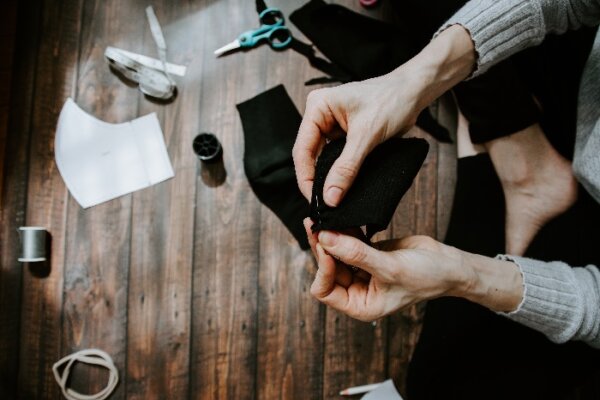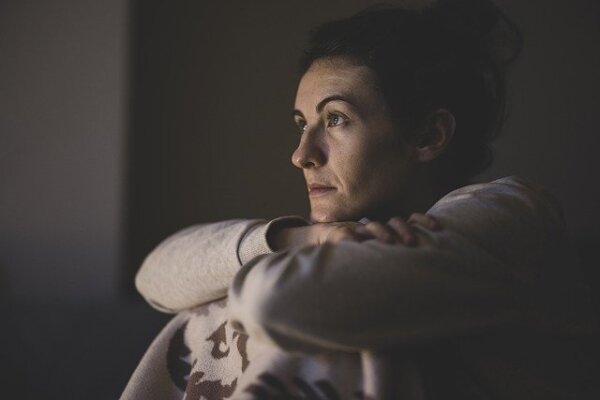What happened to Alice – Part Two

Last week I relayed the story of “What happened to Alice” during the pandemic shut-down. (If you missed it, please read it now.) I found Alice’s story disturbing. I’m confident, though, that anyone who could describe a 13-month lock-down as “$4k a month to be in jail” will be able to get back to a full and satisfying life!
While I was writing, I found myself with questions. How might Alice’s “stay” have been handled differently? What could the retirement facility have done? Did other seniors experience this same sort of lock-down? Answers started coming – so this week, here’s “What happened to Alice – Part Two.”
First, the difference between an “assisted living” facility and a “retirement community.”
Alice lives in an assisted living facility where meals are provided. She gets various levels of medical assistance, and social activities are offered (when it’s safe for people to get together). Assisted living apartments usually have emergency communications (a pull alarm or a wearable medical alert). And in an emergency like a wildfire or flood, facility staff manages an evacuation.
By contrast, I live in a 55+ retirement community where we are considered “independent.” We own our own homes, and property managers don’t come in. Meals and (most of) our activities are up to us. We get ourselves to the doctor or call 911 when necessary. In an emergency like a fire, we are responsible for our own evacuation – following police instructions, of course. (You can read our near-evacuation story, too, if you missed that!)
The important point: Retirement or assisted living communities are not nursing homes. The former are considered “residential” environments; nursing homes are considered “medical” environments. (Want more details on these definitions? Here’s a good resource.) This Advisory deals with senior residential living.
How did senior retirement communities respond to the pandemic shutdown?
Here are some examples of what went on in different communities. All this information comes from people I know – or heard about from readers.
Visitors.
Alice’s facility closed its doors and residents’ doors and monitored all traffic. As already mentioned, no one died of COVID. (Editor’s note: Nationwide, 1 in 12 people in assisted living homes died of COVID.)
Where I live, visitors — including gardeners, housekeepers, etc. — came and went. People wore or didn’t wear masks. (Our clubhouse was closed.) We had a handful of COVID cases among neighbors, but no deaths that I know of.
Isolation.
Alice was alone in her room all day with her TV. Food was delivered at the door. Had she not picked up her food, staff would have noticed. (But it doesn’t sound as though anyone lingered to chat.)
My brother lives in a large (1,000 + people) retirement community in Arizona. Some people had meals delivered, but not all. To track their residents, that HOA set up a system of hanging a sign on the door knob. (Picture a “Do not disturb” sign on a hotel room door.) If you didn’t take the sign in in the morning, security personnel knocked and then came right in to check on you.
In our community of over 500 people, most people stayed home. We shopped during “senior hours.” Some people picked up food boxes via drive-thru, and food programs delivered meals. During these months at least 4 people living alone fell and were not found for hours or days. Three died on the floor and the other died later in hospital. There was no system for checking on everyone. (A particular challenge during our near-evacuation.)
Communications.
So many people report having “binge watched” old sitcoms, series, movies, etc. Alice had TV and probably did her share of watching. But she didn’t have internet access because she didn’t have her own computer. Joe and I have both TV and internet. My brother had the computer and internet and conquered Zoom so we were at least able to see each other’s smiles.
What could have been done to combat what Alice described as “being in jail?”
As long as people are still getting infected by the coronavirus, it has the chance to mutate again. More shut-downs are very likely. We might as well be ready. Here in “What happened to Alice – Part Two” are some ideas I’ve picked up.
- Set up a one-on-one “Buddy Phone-Call” program. Within a week of the shut-down we had found volunteer telephone callers. They checked in daily with a handful or even a dozen neighbors up and down the block. (The program worked for about 3 months, then dwindled.)
- Connect groups via conference calls. Many families set up weekly zoom calls, as did church groups. Our emergency preparedness group held zoom meetings with professional guest speakers. Our low vision support group set up a weekly telephone conference call. And a senior friend of mine attended a weekly “book club” zoom call. Everyone still read the book – via Kindle – and participated in the discussion. Only thing missing were refreshments!
- Plan a daily activity – like delivering meals or the newspaper or picking up trash – to make it clear when people aren’t responding. (My brother reported that sure enough, some mornings he got a knock on the door because he’d forgotten to take in his door-hanger!)
- Come up with a no-contact game. At a retirement community not far from where I live, neighbors staged a “mailbox scavenger hunt.” Special stickers were placed on a couple dozen mailboxes sprinkled throughout the community. Neighbors taking their daily walks searched for and “found” the stickers. They noted the mailbox numbers and deposited their entry forms. Winners were chosen. This simple game got people safely out and about – social distanced — and gave everyone something to enjoy.
- Combine some ideas! Our craft group was amazingly creative. First, they sewed and delivered over 700 hand-made masks (as in the image above)! Then they switched to working on a monthly craft project for people at home. Neighbors signed up to get the project pieces. A conference call later on delivery day helped explain how to assemble everything. Different group members took on planning, assembling the pieces, writing directions, boxing everything up, delivering boxes to that month’s participants, and conducting the conference call. Everything took place while members maintained proper “social distance.” (Now that we are open again, the monthly craft project delivery service is still going strong to about 25 home-bound seniors.)
Of special concern for seniors — internet access.
TV and internet access seem essential these days for entertainment and mental activity. But I am afraid many may be making inaccurate assumptions about internet usage by seniors.
Alice’s retirement home apparently had internet, but she hadn’t had time to get a computer before everything closed down. My brother’s community offers basic cable as part of the rent but charges extra for upgraded internet service. (They do have a “computer club” to help with computer literacy, but of course it was shut down during COVID.). In our community, you’re on your own to buy TV and internet service and to get the help you need to make everything work.
What we discovered during the evacuation scare last year is that at least a third of our senior neighbors have no internet access.
They don’t have it because they either can’t afford it or don’t have the necessary computer skills. Obviously their entertainment choices were limited during the shut-down. Worse, they missed emergency communications during the evacuation threat!
What have we learned from What happened to Alice – Part Two?
This Advisory is not a complete analysis of how seniors cope with isolation or how senior residential facilities provide “caring and supportive environments.” It’s just a collection of what I have learned and observed within my own circle of friends and acquaintances.
A couple of things stand out.
First, some communities had better chances of connecting. These were communities with active and creative neighborhood leaders. Setting up meetings, games, etc. took thought and time and the ability to organize things remotely.
Second, voice and video connections were essential to helping people combat loneliness and isolation. Hugs would have added, of course. Anyone heading for retirement living needs to find out about services and support for digital devices!
As I wrote at the beginning of telling Alice’s story, preparedness really means having some options and some extra supplies. It also takes some extra creativity. When it comes to coping with a pandemic shut-down, we need all three!
Virginia
Your Emergency Plan Guide team
What are some things you did in your own community to keep people entertained and engaged during these long months? What can you add to our findings about “What happened to Alice — Part Two?” Please let us know.

